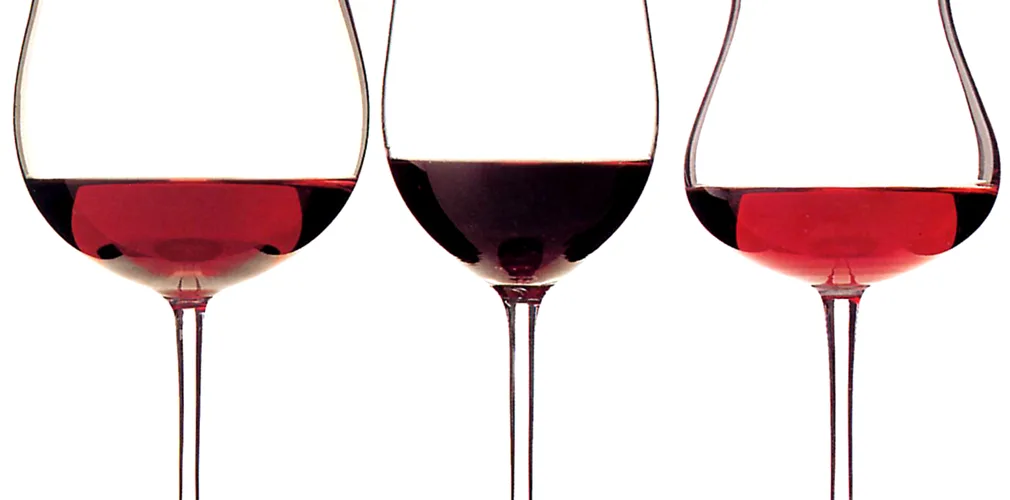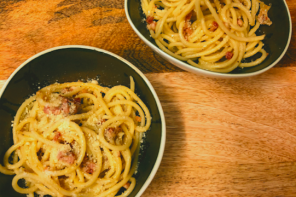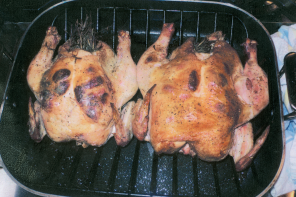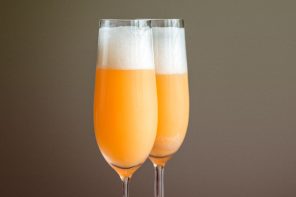Most wine lovers go through a phase where they become entranced by wine blends. They are a fascinating breed, especially because there are endless possibilities. Are single varietal bottles more “pure” than a blend of many varietals? What’s the real point of blending grapes together?
Let’s begin the conversation by stating the obvious: people have been blending different varietals together for approximately forever. The Bordeaux region of France, depending on what side of the Garonne river you’re standing on, is almost always Cabernet Sauvignon or Merlot- dominated, with various percentages of Cabernet Franc, Malbec and Petit Verdot thrown in. France’s Rhone Valley is likewise all over the place: a red from the Southern half of the Rhone will be a blend of Grenache, Syrah & Mourvedre, with a slight chance of Carignan, Marselan and about a dozen other obscure varietals. In the Northern half of the Rhone, Syrah is very commonly fermented (in the same tank!) with Viognier – a white grape – which accentuates the gamey, wild Syrah with lifted floral aromatics.
What’s the difference between these wines and a New World blend? These Old World wines aren’t labelled as blends. Each region has rules, and the rules state which grapes they can use and in what percentage. When it comes time to label it, simply putting “Cote Rotie” or “Cotes du Rhone” is enough; the grapes inside are presumed known.
An interesting glimpse into New World wine labels: a wine labeled “California Cabernet Sauvignon” only has to contain 75% Cabernet Sauvignon grapes. That means 25% of that particular bottle can be other red grapes and they don’t have to tell you about it! WHUT?! Yes, believe it. But don’t let that make you feel you’ve been lied to. It’s the government: they know what they’re doing*. More interesting facts: in Oregon a bottle must be 90% of its labeled varietal; in Australia it’s 85%. And so the government regulations turn.
What’s the point of all this? In truth, it’s very possible you are drinking blends and don’t even know it.
Blending has some precise advantages. If a winery is to maintain a specific style, or even if they simply want to make the best wine they can every year, blending is an important tool. Let’s take three Bordeaux varietals: Cabernet, Merlot and Petit Verdot. Cabernet Sauvignon is a powerful grape that becomes a bit more user-friendly with the softening qualities of Merlot. Petit Verdot is a grape that sometimes struggles to reach optimal ripeness, but when it does can offer some very intense tannin and depth of color. All three can come together in a symbiotic way to make a wine that is consistent vintage to vintage. Like it or not, this is what a lot of wine-buyers want.
To be a wine-lover, isn’t it imperative to know the individual characteristics of each grape? Is something unique being lost when you create a blend? Maybe. If you’re making a mixed drink and add too much of something, you balance it out with something else. In this sense, blending could be perceived as a way to mask less-than-awesome qualities. But consider this: if the blending is a way to make the best wine possible rather than to cover up flaws, aren’t you winning in the end with better wine?
All this nonsense about labeling and intention could lead you to several conclusions: 1.) Many grapes were born to play together. 2.) Humans were meant to play with grapes, and to refine the art of making wine – whether that entails blending or letting a varietal shine on its own. Coaxing grape juice to a full expression takes a lot of skill and experience. Best just to trust the pros that made your juice and enjoy it.
*cue sarcastic bipartisan tone








